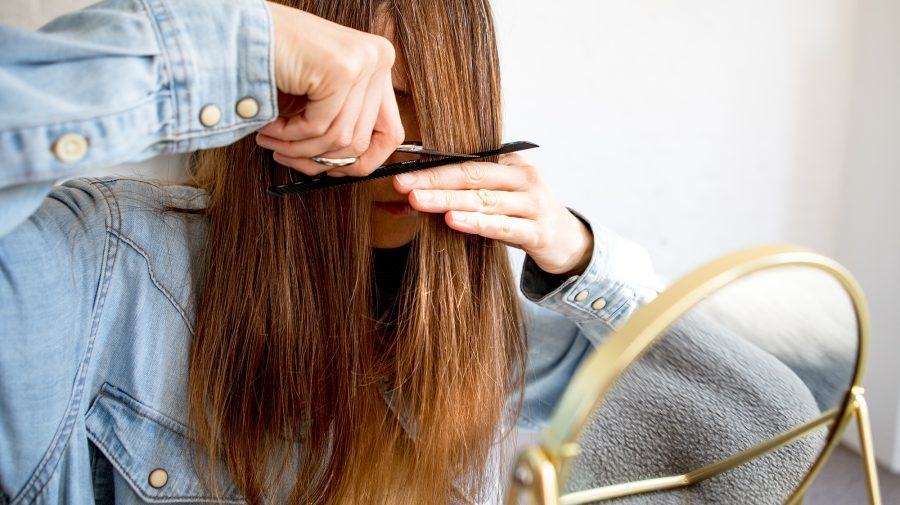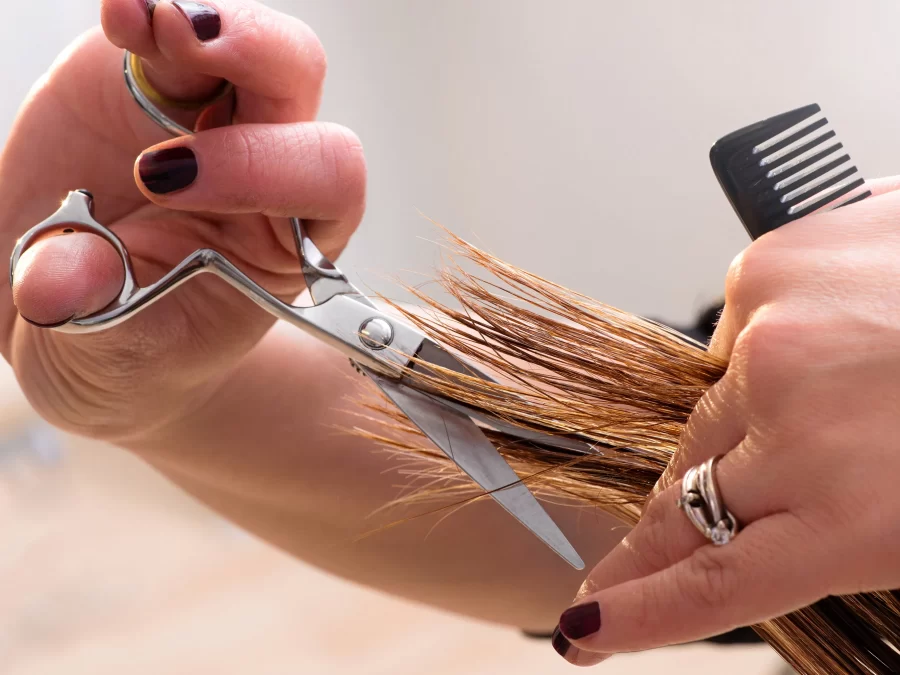How to cut your own hair in layers – ponytail made the rundown well, look no further. Meet the braid technique, otherwise called “The Unicorn Cut.” This DIY hair style strategy that has been exploding on YouTube has individuals integrating their hair with a very high pig tail that appears as though a unicorn horn and giving themselves an invigorated hair style with a solitary clip. It’s a strong move most definitely, however the outcomes aren’t quite as brutal as they appear.
The braid strategy can give you one kind of hair style: a vigorously layered one. As an expert beautician, I’d propose possibly engaging this strategy assuming that you have very long hair or wavy hair, on the grounds that exceptional layers are the most ideal for wavy surface and loads of length.
Fortunately, endeavoring this hair style technique at home requires a couple of reasonable instruments. This is what you’ll require:

A couple of shears
Two hairpins
A detangling brush or wide tooth brush
A mirror
Discretionary: Thinning shears
Keep perusing for a speedy breakdown on the best way to accomplish this brief change in only 5 basic advances.
Brush Your Hair
How to cut your own hair in layers – ponytail: you will eliminate any bunches from the hair with a detangling brush. Assuming you have wavy hair, you can utilize your beloved wide tooth brush. Ensure that the hair is totally evaporate so it doesn’t contract after you trim it. I’d likewise suggest doing this on clean hair rather than second or third day hair on the grounds that the regular oils our scalp produces can burden our strands a touch more and thusly the length of your hair might recoil up a piece after your first wash.
Then, turn your knot free mane over and gather the hair into a high braid simply over the focal point of your brow (channel your inward unicorn). Flip your head straight up and check in your mirror that the arrangement of your pig tail is focused prior to getting with a hairpin.
To keep away from knocks, you can utilize your detangling brush to assist you with smoothing the hair down around the scalp.
Then, at that point, decide how much length you need to cut off. On the off chance that you don’t know, start little with 1/2″ or 1″ (contingent upon how long your hair is in any case). In the event that you don’t cut enough off the initial occasion when, you can constantly revisit this cycle again on the grounds that well, you can go more limited all of the time. Also, this is just a brief interaction.
Utilize your subsequent barrette to stamp that line where you will cut. Wrap it near the foundation of your braid and afterward slide it down to your cut point.
Your solitary clip will be made just beneath that subsequent fastener, cutting straight across. Having sharp shears is significant, particularly for a trim like this current that is dealing with a thick, concentrated area of hair. Assuming you use kitchen scissors or whatever has a dull sharp edge, you’ll observe that the scissors will truly battle to float through the main part of your strands and will leave them more powerless to fraying rapidly.
Presently, I would suggest never cutting your length over the jaw. Listening to this guidance will guarantee that your most brief layer falls no higher than your facial structure. Assuming that you want to have a more drawn out periphery or side bang, I’d propose forgetting about those pieces and mixing them into your layers after the greater part of your hair is trimmed.
You can involve your shears for this trim assuming you incline toward obtuse finishes, or then again assuming that your long hair has a better thickness and you would rather that it feels more full versus wispy. For thicker hair and wavy hair, you should think about utilizing texturizing shears on the off chance that you have them accessible to you. Diminishing shears have much less leeway on the grounds that the cut they make isn’t really cruel. These shears will give you a lot milder, mixed completion on your finishes.
You’ve done most of the work and your hair is practically all set. As an expert beautician, I have a couple of somewhat late ways to detail your recently layered ‘do. These are altogether absolutely discretionary, yet they have the ability to change your slice significantly further to appearing as though it was finished by an expert.

Point Cutting: If you’ve let your pig tail down and you feel the layers are looking excessively unforgiving or gruff for your hair type, I’d suggest point trimming your closures. Throw your hair back into that unicorn braid – – you can involve your normal shears or diminishing shears for this – – and with a tight grasp around those closes, utilize your shears to trim straight up, into your closures. Point cutting will give a milder, lighter completion to your finishes and can separate what might feel like “rack” layers.
Adjusting Your Shape: The pig tail hair style technique will give you a particular “V” shape when it’s all setting down against your back. Assuming you favor a your strands to fall with to a lesser degree a prominent shape, this is what you do – – make a perfect, focus separating split right down your head. Bring each side around to the front of your shoulders and make a straight cut across the base layer of hair. Cross check that the two sides are even by uniting them underneath your jawline. Losing that last layer will wipe out the long point that makes the “V” shape, and will leave you with even more a delicate “U” shape, similar to a square nail trim with adjusted edges.
Item: Styling to the side, assuming you can get a small travel size container of Virtue Split End Serum ($20), I enthusiastically suggest doing as such. I utilize this after each hair style to assist seal with newly trimming closes and forestall any fraying or future parting. Proceeding to apply a pea size measure of this item to your finishes when you escape the shower, will assist with keeping them looking solid and expand how much time until your next hair style.
